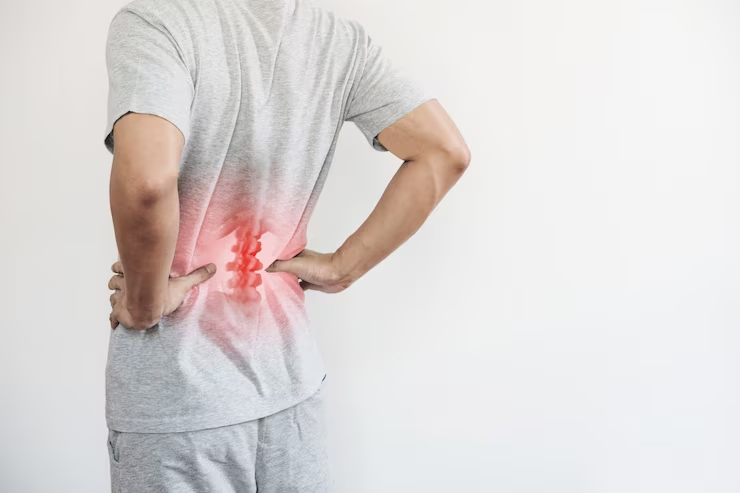
This article was published on: 05/31/23 8:31 AM
The human spine is a complex structure that consists of bones, muscles, nerves, and other tissues. One of the critical components of the spine is the inter-vertebral disc, which serves as a shock absorber and allows for flexibility and movement. Inter-vertebral discs are often compared to jelly donuts because of their similar shape and composition.
Inter-vertebral discs, located between the vertebrae of the spine, are often compared to jelly donuts because of their similar structure. These discs are crucial components of the spine, providing support, shock absorption, and flexibility to the back. Understanding the anatomy and function of inter-vertebral discs can help people take better care of their spinal health and prevent back pain and injury.
To understand the similarities between inter-vertebral discs and jelly donuts, we need to look at their composition. Jelly donuts consist of a soft, jelly-like filling enclosed in a tough outer layer of dough. Similarly, inter-vertebral discs consist of a soft, jelly-like substance called the nucleus pulposus, which is surrounded by a tough outer layer called the annulus fibrosus. The nucleus pulposus is a gelatinous material that is made up of water, collagen, and proteoglycans, which gives it its jelly-like consistency. The annulus fibrosus, on the other hand, is made up of strong, fibrous tissue that acts as a protective barrier for the nucleus pulposus.
Anatomy of Inter-vertebral Discs
Inter-vertebral discs consist of a tough outer layer, called the annulus fibrosus, and a soft, gel-like center, called the nucleus pulposus. The annulus fibrosus is made up of concentric rings of fibrous tissue that surround the nucleus pulposus. This outer layer is rich in collagen fibers, which provide strength and stability to the disc. The nucleus pulposus, on the other hand, is made up of a jelly-like substance that contains water, collagen, and proteoglycans, which help to absorb shock and distribute pressure evenly across the disc.
The inter-vertebral disc is a complex structure that is composed of various cells and extracellular matrix components. The cells in the disc include chondrocyte-like cells, fibroblast-like cells, and stem cells. These cells are responsible for maintaining the extracellular matrix and producing the proteins that make up the disc. The extracellular matrix consists of collagen, proteoglycans, and glycoproteins. Collagen provides the tensile strength of the disc, while proteoglycans are responsible for water retention, which is essential for the shock-absorbing properties of the disc.
Function of Inter-vertebral Discs
The inter-vertebral discs play a critical role in the health and function of the spine. They act as shock absorbers, cushioning the spine and reducing the impact of everyday activities such as walking, running, and jumping. The nucleus pulposus is particularly important in this regard because it can compress and expand in response to changes in pressure, distributing the load evenly across the disc.
The annulus fibrosus is responsible for maintaining the shape and integrity of the disc, preventing the nucleus pulposus from herniating or bulging out of the disc. The annulus fibrosus also contains nerves that provide sensation to the disc and the surrounding tissues. These nerves play a role in pain perception and can become irritated or damaged in conditions such as herniated discs and degenerative disc disease.
Common Conditions Affecting Inter-vertebral Discs
Several conditions can affect the health and function of inter-vertebral discs, leading to back pain and other symptoms. Some of the most common conditions affecting these discs include herniated discs, degenerative disc disease, and spinal stenosis.
Herniated discs occur when the nucleus pulposus bulges out of the disc and presses on surrounding nerves. This can cause pain, numbness, and weakness in the back and extremities. Herniated discs can occur as a result of trauma, repetitive motion, or natural degeneration of the disc.
Degenerative disc disease is a condition in which the inter-vertebral discs gradually lose their ability to absorb shock and maintain their shape. This can result in a narrowing of the space between the vertebrae, causing pain and stiffness in the back. Degenerative disc disease is a natural part of the aging process, but it can be accelerated by factors such as smoking, obesity, and poor posture.
In recent years, there has been a growing interest in regenerative therapies for inter-vertebral disc degeneration. These treatments aim to stimulate the body’s natural healing processes and promote the growth of healthy tissue in the damaged disc. One such therapy is platelet-rich plasma (PRP) therapy, which involves injecting concentrated platelets from the patient’s blood into the damaged disc. Platelets contain growth factors that promote healing and regeneration, making them a promising treatment option for inter-vertebral disc degeneration.
In addition to PRP therapy, there are several other regenerative therapies under investigation for inter-vertebral disc degeneration. These include stem cell therapy, which involves injecting stem cells into the damaged disc to promote the growth of healthy tissue, and gene therapy, which involves modifying the genes in the damaged disc to promote healing and regeneration. While these therapies are still in the experimental stages, they hold great promise for the future of inter-vertebral disc treatment.